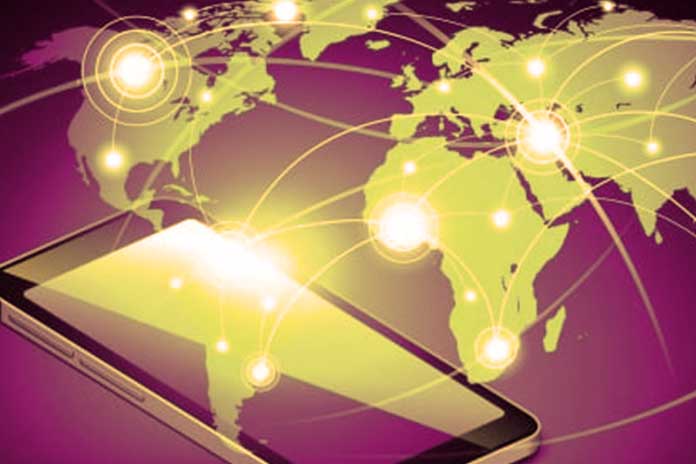The Internet of Things is developing and developing. The number of things associated with the IoT will increase to 46 billion gadgets by 2021. Other economic specialists are, in any event, foreseeing 50 billion. More significant than the number of things, be that as it may, is the question after their systems administration. The Internet of Things is anything but an irregular heap of gadgets, yet a blend of electronic frameworks outfitted towards a particular objective: the objective is the trading of information.
It is not the individual devices that provide added value in the Internet of Things, but their networking. This realization should go without saying, but it is crucial to understand the importance of advanced network technologies for the IoT. This is mostly about radio communication because the Internet of Things is a virtual wireless network. There are many reasons for not using cables – with wearables, it is, for example, the comfort of wearing, with sensors, it is often the remote location of the installation. Therefore, advances in mobile connectivity are one of the most critical factors for the success of the IoT.
Challenges In The IoT
In the past, we have seen how mobile networks have become more and more efficient from generation to generation. When UMTS started thirteen years ago, it impressed with a maximum data transfer rate of 0.384 Mbit / s – a real breakthrough from the point of view of the time.
Consumer applications, in particular, can benefit from such performance explosions. However, in the Internet of Things, it is very seldom a question of large volumes of data that have to be transferred in the shortest possible time.
Depending on the application, completely different challenges arise here. Is it about sensors in self-propelled vehicles? Cars, then latency times are in the foreground. To react to other road users or unforeseen events at lightning speed in road traffic, sensor data must be available in real-time. All cars behind can then respond to an emergency braking of an individual vehicle by initiating a braking maneuver at the same time. Rear-end collisions would therefore be a thing of the past. The transmission of such signals must not lead to connection errors or packet loss.
Other modes of transport also pose challenges for mobile connectivity, such as high-speed trains. When devices move at top speeds of 300 km / h and more, the connection quality quickly suffers and the so-called handover, i.e., switching between two radio cells, fails. Another limitation of the old wireless networks is the supported device density. End users are familiar with this from significant events: if tens of thousands of people come together in one place, smartphones quickly lose their reception.
Even in the Internet of Things, thousands of devices frolic in a small space – for example, when loads and containers are equipped with sensors in the logistics industry to track their travel routes. In ports and at comparable transshipment points, the networks have to handle the communication of many transmitters. Sometimes it is not an overload of the network but the poor connection quality that complicates applications in the Internet of Things.
When a sensor is installed in one place, the radio waves do not achieve well, failing the service. However, this cannot be avoided in some instances, for example, when monitoring largely underground infrastructure systems such as the public water supply. And the energy consumption of radio modules almost always plays a role in the Internet of Things: The fact that no cables are used to a large extent naturally also means that the devices are not connected to a central power grid.
Instead, they rely on local power sources, especially rechargeable batteries and batteries. The more often these energy suppliers have to be replaced or charged, the higher the maintenance costs. That is why energy efficiency is the be-all and end-all in many areas of the IoT.
In the past, mobile technologies were mainly designed to maximize data rates. Concerning the amount of data transferred, the energy efficiency of the new radio modules increased, but not absolutely – high-performance components require more electricity.
There is already a gap because of the challenges described. New, better technologies are needed to cover the IoT’s diverse use cases and pave the way for further innovations. 5G and the improved LTE are therefore coming at precisely the right time.
5G Opens Up New Opportunities
With the fifth generation of mobile communications, a completely new age is also beginning in the Internet of Things. In the future, applications should become possible. Data rates in the range of thousands of Mbit / s, device densities of up to a million devices per square kilometer, latency times of just one millisecond, and maximum energy efficiency – this is what the new world of machine-to-machine communication will look like.
To maximize network coverage and integrate devices in the most remote locations into the Internet of Things, 5G supports the so-called multi-hop mesh method. Devices with no network reception can contact other devices in their vicinity and transmit information via this detour to a central node. The great strength of 5G technologies lies in their maximum flexibility. From now on, mobile networks will no longer be the limiting factor in the IoT.
On the contrary: they open up undreamt-of possibilities. Autonomous road traffic provides particularly striking examples. Low latency times, high device densities, and, above all, available reliability of the networks are of crucial importance here so that autopilots can function and traffic safety is guaranteed. The situation is similar with drones and industrial robots, which move autonomously and have to react to their environment in real-time.


